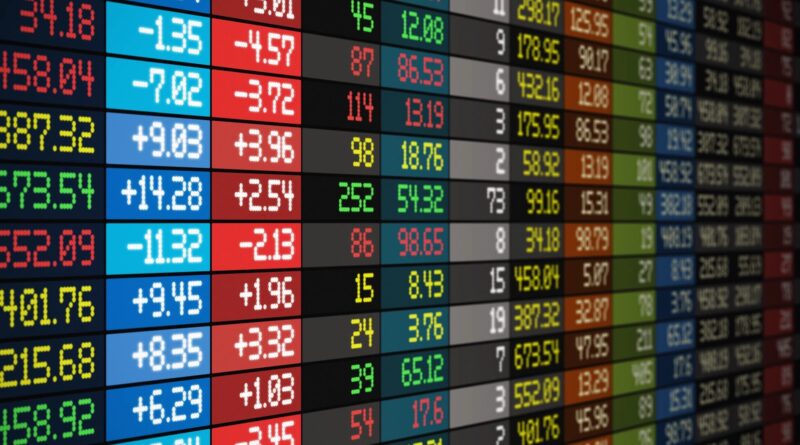What’s An Exchange Rate Spread?
In the world of foreign exchange (forex) trading, exchange rate spread is a crucial concept that plays a significant role in determining the cost of currency transactions. Whether you’re a seasoned trader, a business engaged in international trade, or a casual traveler exchanging currency for a trip abroad, understanding exchange rate spread is essential for making informed decisions and managing currency exchange risks. In this comprehensive guide, we’ll explore what exchange rate spread is, how it’s calculated, its significance in forex trading, and strategies for navigating its impact on currency transactions.
What is Exchange Rate Spread?
Exchange rate spread, also known as bid-ask spread or simply spread, refers to the difference between the buying (bid) price and the selling (ask) price of a currency pair in the foreign exchange market. In other words, it represents the markup or margin that forex dealers or brokers charge for executing currency transactions. The bid price is the highest price at which buyers are willing to purchase a currency pair, while the ask price is the lowest price at which sellers are willing to sell the same currency pair.
The exchange rate spread is expressed in pips (percentage in points) or basis points (bps), which are commonly used units of measurement in forex trading. One pip is equal to 0.0001 for most currency pairs, while one basis point is equivalent to 0.01%.
Significance of Exchange Rate Spread in Forex Trading
Exchange rate spread plays a crucial role in determining the cost of executing forex trades and directly impacts the profitability of trading activities. Here are some key aspects of the significance of exchange rate spread in forex trading:
Transaction Costs
The spread represents the transaction costs incurred by traders when buying or selling currency pairs. As such, wider spreads imply higher transaction costs, reducing the profitability of trades, especially for short-term traders who frequently enter and exit positions. Minimizing the impact of spread on trading performance is essential for maximizing returns in forex trading.
Liquidity and Market Efficiency
The size of the spread is influenced by factors such as market liquidity, trading volume, and volatility. Major currency pairs with high liquidity tend to have tighter spreads, reflecting the ease of buying and selling currencies in the market. In contrast, exotic currency pairs or less liquid markets may have wider spreads, reflecting higher transaction costs and increased risk. Monitoring spread dynamics can provide insights into market efficiency and liquidity conditions.
Brokerage Practices
Forex brokers play a crucial role in determining exchange rate spreads, as they act as intermediaries facilitating currency transactions. Different brokers may offer varying spreads based on their business models, execution methods, and pricing strategies. Some brokers may offer fixed spreads, which remain constant regardless of market conditions, while others may offer variable spreads that fluctuate in response to market volatility and liquidity. Understanding brokerage practices and choosing the right broker can help traders optimize trading costs and execution quality.
Price Discovery and Transparency
Exchange rate spreads contribute to price discovery in the forex market, as they reflect the prevailing supply and demand dynamics for currency pairs. Transparent pricing and competitive spreads are essential for ensuring market integrity and facilitating fair and efficient price formation. Traders rely on accurate and up-to-date spread information to make informed trading decisions and assess the cost-effectiveness of executing trades.
Risk Management
Managing spread-related risks is a critical aspect of forex trading, especially for traders employing leverage and margin. Wide spreads can increase the cost of entering and exiting positions, affecting trade profitability and risk-reward ratios. Traders should factor spread considerations into their risk management strategies, including setting appropriate stop-loss levels, calculating position sizes, and evaluating the impact of spreads on overall trading performance.

Strategies for Navigating Exchange Rate Spread
Navigating exchange rate spread effectively is essential for optimizing trading performance and minimizing transaction costs. Here are some strategies for managing spread-related considerations in forex trading:
Choose the Right Broker
Selecting a reputable and reliable forex broker is crucial for accessing competitive spreads, reliable execution, and transparent pricing. Compare spreads offered by different brokers, consider their trading platforms and order execution methods, and evaluate additional features such as customer support, regulatory compliance, and trading tools. Look for brokers with a track record of providing tight spreads and fair trading conditions.
Monitor Market Conditions
Stay informed about market conditions, including liquidity levels, trading volume, and volatility, as these factors influence exchange rate spreads. Monitor economic indicators, news events, and geopolitical developments that may impact currency markets and contribute to spread fluctuations. Adjust your trading strategies and risk management approaches in response to changing market dynamics and spread levels.
Optimize Trade Timing
Timing your trades effectively can help minimize the impact of exchange rate spreads on trading performance. Avoid trading during periods of low liquidity or heightened volatility, as spreads tend to widen under these conditions, increasing transaction costs. Consider trading during peak trading hours when liquidity is highest and spreads are typically tighter, especially for major currency pairs.
Utilize Limit Orders
Utilize limit orders to enter and exit trades at specific price levels, allowing you to control the execution price and potentially reduce spread-related costs. Place limit orders slightly above the bid price when buying or slightly below the ask price when selling to improve the likelihood of execution at favorable prices. Limit orders can help mitigate the impact of spread widening during volatile market conditions.
Consider Spread Reduction Strategies
Some forex brokers offer spread reduction strategies such as zero spread accounts, commission-based pricing models, or volume-based discounts. Explore these options to potentially reduce transaction costs and optimize trading performance. However, carefully assess the overall trading costs, including spreads, commissions, and other fees, to determine the most cost-effective trading solution for your specific trading style and preferences.
Factor Spread into Risk Management
Incorporate spread considerations into your risk management strategies to ensure effective capital preservation and trade profitability. Adjust your position sizes and risk exposure based on prevailing spread levels, account for spread-related costs when setting stop-loss levels and profit targets, and consider the impact of spreads on your overall trading performance. Integrating spread analysis into risk management frameworks can help you make informed trading decisions and manage trading-related costs effectively.

Exchange rate spread is a fundamental concept in forex trading that directly impacts the cost and execution quality of currency transactions. Understanding how spread is calculated, its significance in forex trading, and strategies for navigating its impact is essential for traders seeking to optimize trading performance and minimize transaction costs. By choosing the right broker, monitoring market conditions, optimizing trade timing, utilizing limit orders,


